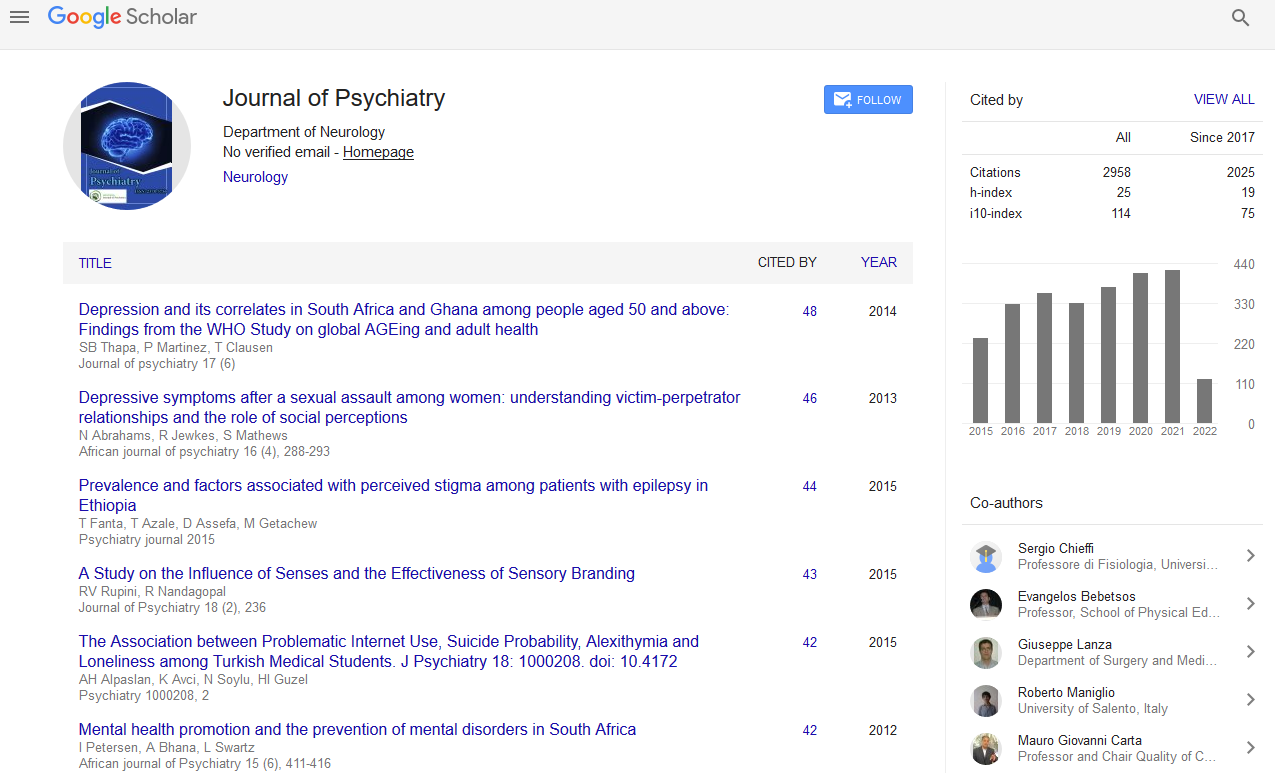PMC/PubMed Indexed Articles
Indexed In
- RefSeek
- Hamdard University
- EBSCO A-Z
- OCLC- WorldCat
- SWB online catalog
- Publons
- International committee of medical journals editors (ICMJE)
- Geneva Foundation for Medical Education and Research
Useful Links
Share This Page
Open Access Journals
- Agri and Aquaculture
- Biochemistry
- Bioinformatics & Systems Biology
- Business & Management
- Chemistry
- Clinical Sciences
- Engineering
- Food & Nutrition
- General Science
- Genetics & Molecular Biology
- Immunology & Microbiology
- Medical Sciences
- Neuroscience & Psychology
- Nursing & Health Care
- Pharmaceutical Sciences
Abstract
Suicide Prevention in England: An Evaluation of Fifteen Years of Action
In his book 'History of Suicide: Voluntary death in Western culture', George Minois examines how a culture's attitudes about suicide reflect wider beliefs and values. Similarly, we too must examine our attitudes to suicide today in light of its prevalence and public health importance in contemporary Britain. Suicide is a major public health issue included as a public health indicator within England's Public Health Outcomes Framework to 'reflect the importance of sustained efforts to keep the suicide rate at or below current levels'.
The first government policy paper on suicide prevention in England titled 'National Suicide prevention Strategy for England' appeared in 2002. This landmark policy was presented by the then Labour government as an on-going, coordinated set of activities which would evolve over several years and would support the target set out in 'Saving Lives: Our healthier Nation' to reduce suicide by at least 20% by 2010. The government described the strategy as comprehensive and evidence based and planned to deliver it as a core program of the National Institute for Mental health in England. Ten years later, the strategy was re-launched by the coalition government and branded 'Preventing Suicide in England: A cross-government outcome strategy to save lives'. Billed as a new strategy it focused on reducing suicide rates and supporting bereaved families. It identified six key areas for action including new suicide prevention research funding; measures to restrict access to harmful suicide promoting media outlets by young people; reducing opportunities for suicide (making prisons and mental health settings safer); better support for high risk groups; improving existing services for children and young people and providing better information and support to bereaved families. That policy is the focus of this paper.


